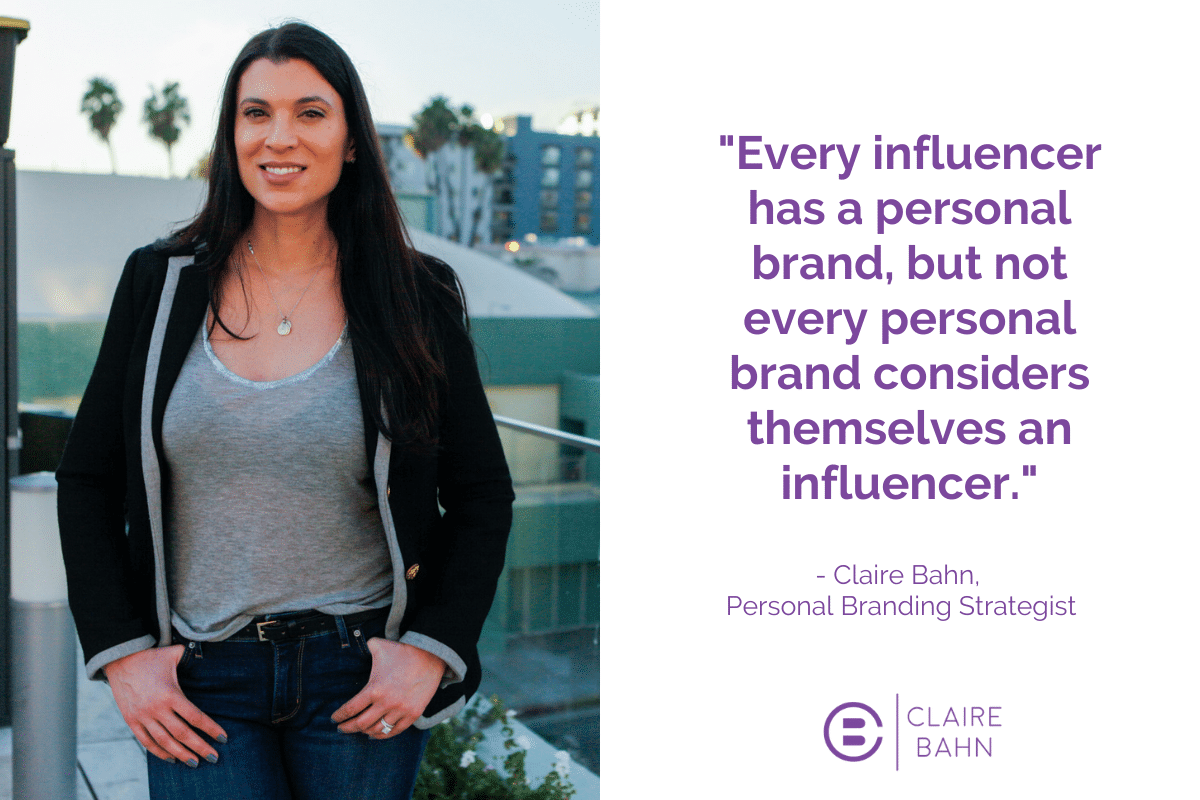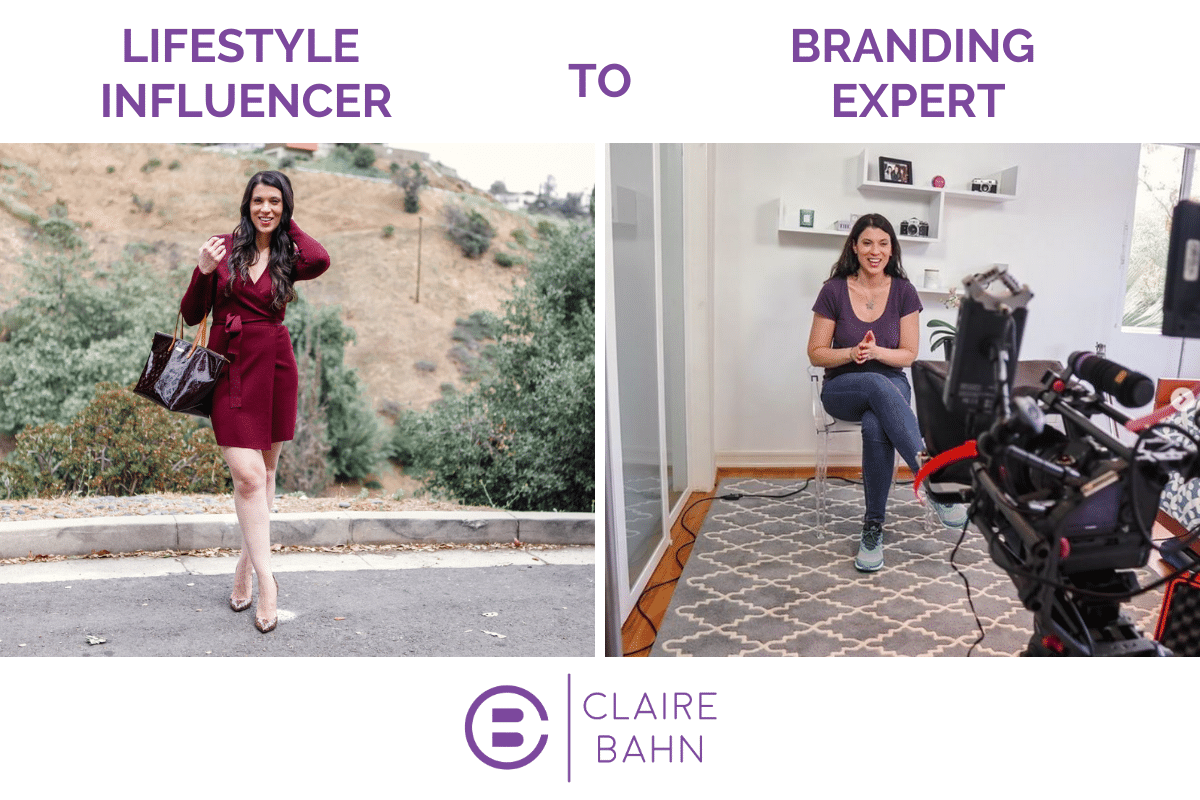We see them in our feeds all day long: People bragging about their high follower counts and (admittedly) impressive sponsorship deals. But in reality, their influencer strategy is all wrong.
Creating and maintaining your digital empire as an influencer is so much more than just relying on your favorite platforms and a high follower count.
As a professional brand strategist and someone with my own personal brand, I can say that I see tons of people making these same mistakes all day long.
Sure, they know how to make themselves look impressive by posting about their LinkedIn following. But are they actually successful?
Do you want to attract more clients and boost revenue?
And by that, I mean, are they influencing sales for those brand deals, are they maintaining a stream of clients or customers, and ultimately, are they growing a business?
You might be surprised to learn that most of these “influencers” are only getting small snippets of that fame and fortune.
No matter what your business goals are, understanding how to execute and maintain a successful influencer strategy for your personal brand is crucial to marketing your business for growth.
So, before you fall into the same trap, let’s get into what you should and shouldn’t be doing for your brand.
RELATED: HOW TO FIND YOUR PERSONAL BRAND VOICE
Personal Brand vs Influencers
Before we get into influencer mistakes, let’s talk semantics.
If you follow me for my personal branding advice, then you might not be too interested in becoming an “influencer.”
But what’s the difference, really?
If you’ve spent any amount of time searching for the defining factors of having a personal brand and becoming an influencer, you’ve probably noticed that the line between the two is a bit blurry.
That’s because they’re sort of the same thing.
Every influencer has a personal brand, but not every personal brand considers themselves an influencer.

A personal brand doesn’t mean having a logo and an aesthetic. It’s a curated, professional online presence. It helps establish you as an expert based on your experiences, thoughts, and advice.
And an influencer isn’t going door-to-door to sell products. An influencer typically uses charm and relatability to get their audience to like, know, and trust them enough to follow or make a purchase.
To put it simply: both rely on a personal touch to be successful.
But if you want to become influential in your industry, it all starts with your personal brand.
If you’re questioning whether or not you’ve already established a personal brand, look back at the content you’ve produced. If the types of content you’re posting is consistent, then you’ve got a good start.
RELATED: HOW TO BECOME AN INDUSTRY LEADER
How Do You Become An Influencer?
Becoming an influencer is simpler than what most people think. Yes, it requires a ton of planning and commitment, but it shouldn’t confuse you or cost you a lot of money.
So, how do you become an influencer?
Personal branding is a crucial piece of the influencer strategy puzzle. You can read the beginning steps to building your brand here. The basic formula for being a successful influencer is as follows:
- Know your stuff
- Post helpful content
- Be consistent
Ultimately, the key to getting started as an influencer is to post – a lot. You should be regularly utilizing stories, feeds, and blogs to help get your name into the digital space.
Before you start posting consistently, you need to know what the heck you’re talking about. People are constantly bombarded with marketing and ads, so show them that you’re a trustworthy source for advice, testimonials, and product recommendations.
That being said, not all of your content should be pushing a product.
Let your followers have a peek into your real life by sharing routines, hosting Q&As, or revealing an embarrassing moment. Transparency is the secret ingredient to a successful influencer strategy.
So what if you have your niche, you’re posting consistency and you still don’t have the authority and recognition you deserve?
RELATED: 10 TIPS TO CREATE A STRONG SOCIAL MEDIA MARKETING STRATEGY
The #1 Influencer Strategy Mistake
Even though influencer strategy can be relatively simple, there are still some common and easily made mistakes. And I see them all the time.
- You’re not being your authentic self
- You don’t come across as confident or trustworthy
- You’re trying to be an expert in too many niches
Of those, there’s one that proves to be the most damaging.
The worst mistake you could make as an influencer is to depend on one social media platform for all of your digital engagement.
The absolute last thing you want to do as an influencer is put all of your eggs in one social media basket. Unfortunately, you’ll see a lot of people falling into this trap. They’ll go viral on one of their social media accounts and then put their other efforts on the back burner.
The people you see bragging about how many followers they have on LinkedIn or Instagram are likely headed for trouble. Don’t feel bad about yourself or your business when you see these people because chances are, most of them aren’t going to “make it” in the long run.
When you’re reliant on a single platform, you’re beholden to that social media algorithm and all its many (many) unpredictable changes.
If you can’t adapt to these inevitable changes, how are you going to grow your personal brand? How will your followers find you? How will new people find you if you can’t count on social algorithms?
The Truth
The harsh truth is that social media platforms aren’t designed to be your friend; as an influencer, they actually sort of mess with you.
Like millions of other users, you’ve probably caught your mind racing with thoughts like…
“I don’t post enough; I’m posting too much; I used the wrong hashtags; Oops, I forgot to put my link in the comment instead of the caption because Facebook and LinkedIn don’t want you to leave the platform.”
You could dedicate every algorithm “hack” to memory, but these algorithms change all the time (yes, even Google).
All these things you’re supposed to be on top of can be a full job in itself. And it takes the fun out of building your personal brand and sharing content for your audience.
While some of the stress of managing social media algorithms is inevitable as an influencer, ensuring that your livelihood isn’t completely reliant on one platform is just as important as the content you’re posting.
7 Strategies That Actually Work For Your Personal Brand

Now, that I told you what not to do with your influencer strategy, let’s get to what tactics actually work.
If you’re serious about growing your personal brand and building an influencer status, I suggest that you incorporate all of these methods into your marketing efforts. When used together, you’ll see your metrics skyrocket.
With enough planning and focused research, you should be able to craft a plan of action for reaching your brand’s goals and avoid becoming “that guy” on your social media feeds.
RELATED: 4 REASONS YOU NEED VIDEO CONTENT MARKETING FOR YOUR PERSONAL BRAND
1. Use Multiple Social Media Channels
First and foremost, tap into multichannel marketing.
This is exactly what it sounds like. You and your personal brand need to be on multiple social media platforms. Focusing on just one is a recipe for disaster.
Think about when you search for one product on Google and all of a sudden ads for that product start popping up across every website you visit. Don’t get me wrong, you don’t want your content to be spammy. But you do want people to notice your presence in several different digital spaces.
It’s not enough for your content to be consistent across all channels – you also have to post regularly.
Schedule your content for every platform on a weekly to monthly basis. Platforms like Facebook, Twitter, Instagram, and LinkedIn should be updated every day. YouTube, Pinterest, and blog posts should be updated at least once a week.
2. Work Smarter, Not Harder
If the idea of creating original content for multiple digital platforms seems daunting, here’s a tip: Refashion your previously created content for your new posts.
A single YouTube video can be reposted as an Instagram IGTV, native LinkedIn video, or a small preview on your Twitter feed. You can even pull audio from your video if you’ve been thinking of starting a podcast!
The list goes on, but you get it.
Frankly, there’s no excuse not to be posting regularly when managing your influencer content strategy. If you’re on top of your scheduled content, you’ll always have things to pull from.
3. Know Your Platforms
No social media platform is created equal. Each has a different algorithm that requires individual attention. But this is only a bad thing if you don’t have a strong understanding of the role each one can play for your personal brand.
Facebook and Instagram are the two heavy hitters, but both are more pay-to-play. This makes it more difficult to grow an organic following. However, LinkedIn and Twitter have a much better potential for organic reach.
YouTube and Pinterest allow for a bit more user control by incorporating SEO into their algorithms. Both platforms use a keyword search, making it easier for you to ensure that your content will show up in the first few results. Essentially, they’re search engines like Google.
You should also consider your target audience when choosing your platforms. If your target demographic is over the age of 35, then you’ll be wasting your time posting on Tik Tok.
4. Have a Backup Plan
Every successful industry leader has a Plan B in case things go haywire. For influencers, your backup plan rests entirely on your influencer website.
There’s no arguing this: You need to have a personal brand website with your own domain.
This makes it so that no single social media algorithm controls you. You’ll always have a fallback plan for your business. By including a website in your influencer strategy, you’re able to manage and maintain a digital presence through Google and SEO, which are far more reliable than other finicky algorithms.
5. Use SEO On Your Website
Now, it’s not always enough to have a website with a few flashy landing pages. You must also learn how to utilize Search Engine Optimization on your site.
After you’ve grasped SEO, you should consider using blog posts on your site to help guarantee that your name will show on the first page of Google’s search results.
Optimized blog posts (like the one you’re reading right now) can be the bread and butter of your influencer strategy. Yes, the word “blog” feels a bit outdated, but the reality is that people still use Google to search for relevant, reliable content. And blogs might be the best way to prove yourself.

6. Engage With Your Audience
Properly engaging with your audience is where all of your strategy efforts can pay off.
There’s no point in devising a marketing strategy if you’re only looking to up your vanity metrics. Engagement is what sets successful personal brands and influencers apart from the people who brag about their follower counts.
Social media engagement means strategically liking, commenting, and sharing content from your target audience. Not only will you get more eyes on your carefully crafted accounts, but you’ll also start seeing DMs from potential future clients.
The best part is that other users who are also serious about building their personal brand will be willing and excited to engage with your content, too. Hopefully, you’ll see that smart, successful influencers and industry leaders make up your supportive digital community.
7. Build Your Digital Empire
Creating and successfully utilizing multiple accounts in your influencer strategy requires you to think about omnichannel marketing.
This means that all of your platforms offer a seamless customer experience. Ultimately, it should be a culmination of all of your efforts.
Think of this as your personal brand’s empire. Every account and webpage should be a place where your audience can expect to go to see content specific to your brand. The catch is that every piece of content looks different from one platform to the next. Remember, every social media platform caters to different audiences who want different types of content.
As long as you can provide the same experience when someone is consuming your content, you’ll start to build that loyal community — and finally — that influencer status.
RELATED: THE GUIDE ON HOW TO BECOME FAMOUS ON SOCIAL MEDIA
Conclusion
Defining your personal brand is the only way to fast-track your success as an influencer in your industry. But if you go viral on one social media platform, don’t make the mistake of thinking that account can carry your career.



